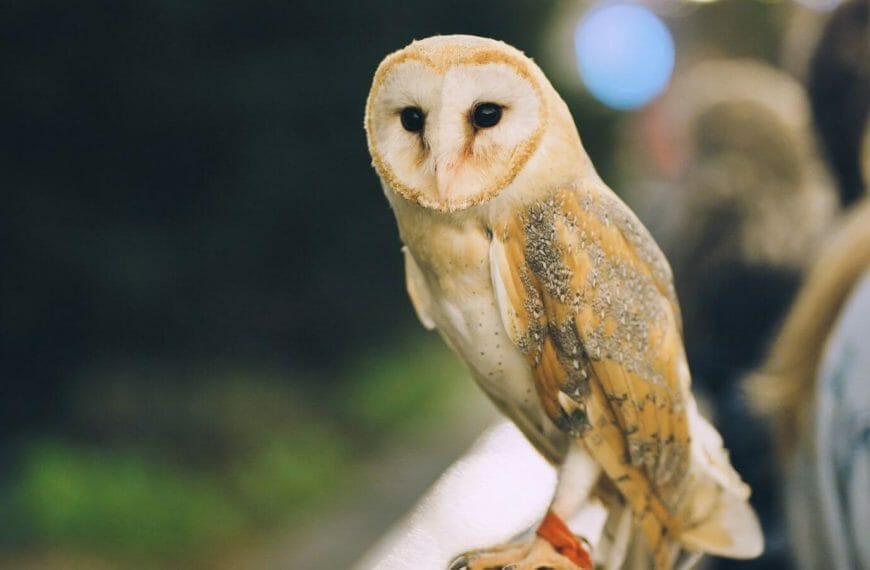This article delves into one of the most intriguing questions about eagle behavior: Do eagles recognize their offspring?
As majestic as they are mysterious, eagles have long captivated the human imagination with their unparalleled power and beauty.
But beyond their striking physical attributes, these avian wonders also exhibit complex behaviors that hold keys to understanding their fascinating world.
Introduction
The Fascinating World of Eagles

Eagles, belonging to the family Accipitridae, are some of the world’s most powerful birds of prey or raptors.
They’re known for their keen eyesight, strong talons, and impressive wingspan. But what truly sets them apart is their intricate social behavior, particularly within family units.
From mating rituals to parenting duties, eagles demonstrate meticulous care and attention in their interactions.
Related Article: How Far Can Eagles See?
Understanding the Behavior of Eagles

Do Eagles Recognize Their Offspring?
Yes, eagles recognize their offspring through visual, auditory cues, chemical signaling, and genetic relatedness
Eagle parenting behavior exhibits a remarkable level of recognition and care towards their offspring, and this is evident through their use of specific vocalizations and territorial behaviour
Researchers study this remarkable phenomenon to enhance conservation efforts and understand avian marvels better
However, once the eaglets disperse, there doesn’t seem to be lasting connections or bonds between relatives, and adult eagles are typically very territorial, even towards their own offspring
The Importance of Family Units
Family units play a crucial role in the life of eagles. After the breeding season, eagles engage in meticulous parenting.
They lay eggs in carefully chosen nesting sites, protect them from potential threats, and provide food for their young.
Such parental care extends beyond just providing sustenance; it also involves teaching fledglings how to fly and hunt, thereby preparing them for their journey to independence.
Related Article: How To Identify Bald Eagle Feathers?
Visual and Behavioral Cues
Young eagles or eaglets maintain direct contact with their parents for weeks after fledging.
Adult eagles, in turn, seem to exhibit certain behaviors towards their offspring that suggest recognition.
For instance, adult birds may differentiate between their young and other juvenile eagles when providing food or protection from predators.
However, the exact visual or behavioral cues used by eagles for offspring recognition are yet to be fully understood.
The Role of Vocalizations
Vocalization also plays a critical role in eagle family dynamics.
Eagles have a diverse range of calls and sounds, which they use for everything from communicating danger to expressing territorial claims.
A number of studies suggest that these vocalizations might also serve as identifiers, allowing individual eagles to recognize each other within family units.
This hypothesis is supported by observations of eagles responding differently to the calls of their offspring compared to those of other birds.
Related Article: Can A Pigeon Fly Without Tail Feathers?
The Life Cycle of Eagles
Nesting and Hatching
The life of an eagle begins in a nest, usually built high up in trees or on cliff edges to ensure safety from terrestrial predators.
After a courtship period, the female eagle lays one to three eggs. Both parents share the responsibility of incubating the eggs until they hatch, which typically occurs after 35 days.
The First Flight
The eaglets remain in the nest for around 10 weeks, during which time they grow and develop under the careful watch of their parents.
The momentous event of their first flight, or fledging, marks a significant milestone in their journey towards independence.
It’s a moment of transition, as the young eagles spread their wings and venture out from the safety of the nest for the first time.
Parental Care and Recognition
Post-fledging, the parental care continues. The adult eagles protect their young from threats, guide them in hunting, and provide food when necessary.
During this period, eagles demonstrate behaviors that suggest recognition of their offspring.
This phase, which extends several weeks beyond fledging, is crucial for the survival and development of the young eagles as they learn essential skills for independence.
The Journey to Independence
After a few weeks of post-fledging care, the young eagles begin to disperse and explore on their own, marking the beginning of their independent lives.
Despite this separation, there are instances where adult eagles continue to provide occasional care or protection for their fledged offspring, hinting at a lasting recognition and bond.
It’s a testament to the strong familial relationships within the world of eagles.
How Eagles Recognize Their Offspring
The Power of Imprinting
Imprinting is a crucial concept in understanding how eagles might recognize their offspring.
It’s a process where young animals learn and adopt certain characteristics of their parents during a critical early life stage.
In the case of eagles, it’s believed that the eaglets imprint on their parents, learning their visual features, behavioral patterns, and vocal cues, which could potentially be used for recognition later in life.
The Bond Between Parent and Offspring
The bond between parent and offspring in eagles is robust and intricate.
From the moment of hatching to the weeks following fledging, the parents and offspring share numerous interactions.
These repeated encounters may facilitate the learning of individual characteristics, thereby enabling recognition.
However, it’s important to note that the nature and mechanisms of this recognition are still a subject of ongoing research.
Visual and Auditory Cues
In addition to imprinting, adult eagles may also use visual and auditory cues to recognize their offspring.
Eagles have exceptional eyesight and a diverse vocal repertoire, both of which could serve as basis for identification.
For instance, variations in size, plumage patterns, or specific calls might be used by eagles to distinguish their offspring from other young birds.
The Significance of Offspring Recognition
Insights into Eagle Populations
Understanding offspring recognition can provide valuable insights into the dynamics of eagle populations.
It can shed light on aspects such as breeding success, survival rates, dispersion patterns, and even genetic diversity.
In fact, data relating to recognition and parental care behavior can serve as critical indicators of the health and vitality of eagle populations.
The Role of Offspring Recognition in Survival
Offspring recognition plays a crucial role in the survival and well-being of young eagles.
By recognizing their offspring, adult eagles can ensure targeted care, protection from predators, and efficient allocation of resources.
This recognition and the ensuing parental care greatly increase the odds of survival for the fledgling eagles, especially in their first year of life when they are most vulnerable.
Understanding Avian Familial Relationships
Exploring the concept of offspring recognition also opens a window to understanding familial relationships within the avian world.
It provides a glimpse into the social structure of bird species, shedding light on their parenting strategies, kinship ties, and group dynamics.
It also underscores the complexity of avian social behavior, revealing layers of interaction that extend beyond mere survival instincts.
Unraveling the Enigma
Do All Birds Recognize Their Offspring?
While this discussion has been focused on eagles, it’s worth noting that offspring recognition is not exclusive to these majestic birds.
Many bird species, from the sociable black-capped chickadees to the solitary hummingbirds, exhibit behaviors suggestive of offspring recognition.
However, the degree and mechanisms of recognition can vary widely among different bird species, reflecting the diverse strategies adopted by these avian creatures for survival and reproduction.
What Sets Eagles Apart?
Eagles stand out in the avian world not just for their physical prowess, but also for their complex social behavior.
Their strong parental care, lasting bonds with offspring, and potential for individual recognition make them an intriguing subject of study.
The intricate interplay of visual, auditory, and behavioral cues involved in eagle offspring recognition reflects the sophistication of their social interactions and highlights their adaptability as a species.
Conclusion
The Majestic World of Eagles
In conclusion, the question of whether eagles recognize their offspring opens a fascinating window into the majestic world of these raptors.
While much remains to be discovered, current observations and studies suggest a complex system of recognition within eagle families, involving a mix of imprinting, visual cues, and vocalizations.
This remarkable aspect of eagle behavior underscores the intricacies of their social world, offering us a deeper appreciation of these magnificent creatures and their place in the natural world.
FAQ
How Do Eagles Imprint On Their Parents?
Similar to many other bird species, eagles are known to imprint on their parents immediately after hatching.
This process includes recognizing their parents’ physical appearance, scent, and vocalizations, which promotes the bonding required for survival
What Role Does Imprinting Play In Eagle Parenting?
Imprinting plays a vital role in eagle parenting. It allows the eaglet to identify its parents and siblings, which ensures their safety and well-being.
This strong bond encourages the eaglet to follow its parents for food and learn crucial survival skills from them.
Does Eagle Imprinting Differ Across Different Eagle Species?
While the process of imprinting is somewhat consistent across bird species, including eagles, some differences may occur in various eagle species.
Some species may recognize their parents’ vocalizations better, while others might rely more on visual cues.
Research and observations from the Audubon society suggest that bald eagles, for instance, primarily recognize their family through visual identification.
How Do Eagles Keep Track Of Their Offspring Once They Have Left The Nest?
Eagles are able to keep track of their offspring even after they leave the nest. The parents continue to provide food for a time and also stay in communication with their young ones via specific calls.
This ongoing contact allows the eagles to ensure the safety and well-being of their young no matter the distance from the nest.
Will A Male Eagle Recognize His Juvenile Bald Eagle Offspring Once It Has Started Flying From The Nest?
Yes, male eagles are known to recognize their juvenile bald offspring even after they’ve started flying from the nest.
Males typically remain near the nest for weeks after their eaglet begins flying around, often responding to its calls and bringing food as it learns to fend for itself.
Do Eagles Exhibit Parental Recognition When It Comes To Bringing Food To Their Nest?
Yes, eagles exhibit parental recognition when bringing food to their nest. Bald eagles especially are known to be very dedicated parents, taking turns to hunt and taking care of their nestling.
This behavior is influenced heavily by their ability to recognize their eaglet, ensuring it gets the nourishment it needs for growth and development.
Can Siblings Among Eagles Recognize Each Other?
There’s anecdotal evidence suggesting that eagle siblings can recognize each other, just as they can identify their parents.
This recognition is facilitated by the time spent together in the nest during their early life stages, allowing them to imprint on each other’s visual appearance and vocalizations.
How Does The Choice Of Nesting Location Influence Eagles’ Ability To Recognize Their Offspring
The choice of nesting location can greatly facilitate eagles’ ability to recognize their offspring.
Nesting in high, isolated areas enables better visibility and decreases distractions from other birds like crows and jays.
This makes it easier for eagle parents to spot their offsprings’ unique traits and behaviors.
Do Eagles Have A Strong Sense Of Smell To Recognize Their Offspring?
Unlike some animals such as the otter, eagles do not primarily use their sense of smell to recognize their offspring.
Eagles are predominantly visual creatures and rely heavily on sight and sound for recognition of their family.





![How to Identify Turkey Feathers [Ultimate Guide]](https://ekz2dfuukk8.exactdn.com/storage/2023/03/HOW_TO_IDENTIFY_TURKEY_FEATHERS-793x570.jpg?strip=all&lossy=1&ssl=1)















![How to Attract Ravens to Your Yard: The [Complete] Guide to Attracting these Beautiful Birds to your Backyard](https://ekz2dfuukk8.exactdn.com/storage/2023/10/How-to-Attract-Ravens-to-Your-Yard-870x570.jpg?strip=all&lossy=1&ssl=1)
![How to Keep Birds Off Your Boat: Ways and [Best] Deterrents to Keep Birds Away From Your Boat](https://ekz2dfuukk8.exactdn.com/storage/2023/05/how-to-keep-birds-of-your-boat-870x570.jpg?strip=all&lossy=1&ssl=1)




![How to Keep Birds Off Your Boat: Ways and [Best] Deterrents to Keep Birds Away From Your Boat](https://ekz2dfuukk8.exactdn.com/storage/2023/05/how-to-keep-birds-of-your-boat.jpg?strip=all&lossy=1&ssl=1)



![How to Identify Turkey Feathers [Ultimate Guide]](https://ekz2dfuukk8.exactdn.com/storage/2023/03/HOW_TO_IDENTIFY_TURKEY_FEATHERS.jpg?strip=all&lossy=1&ssl=1)